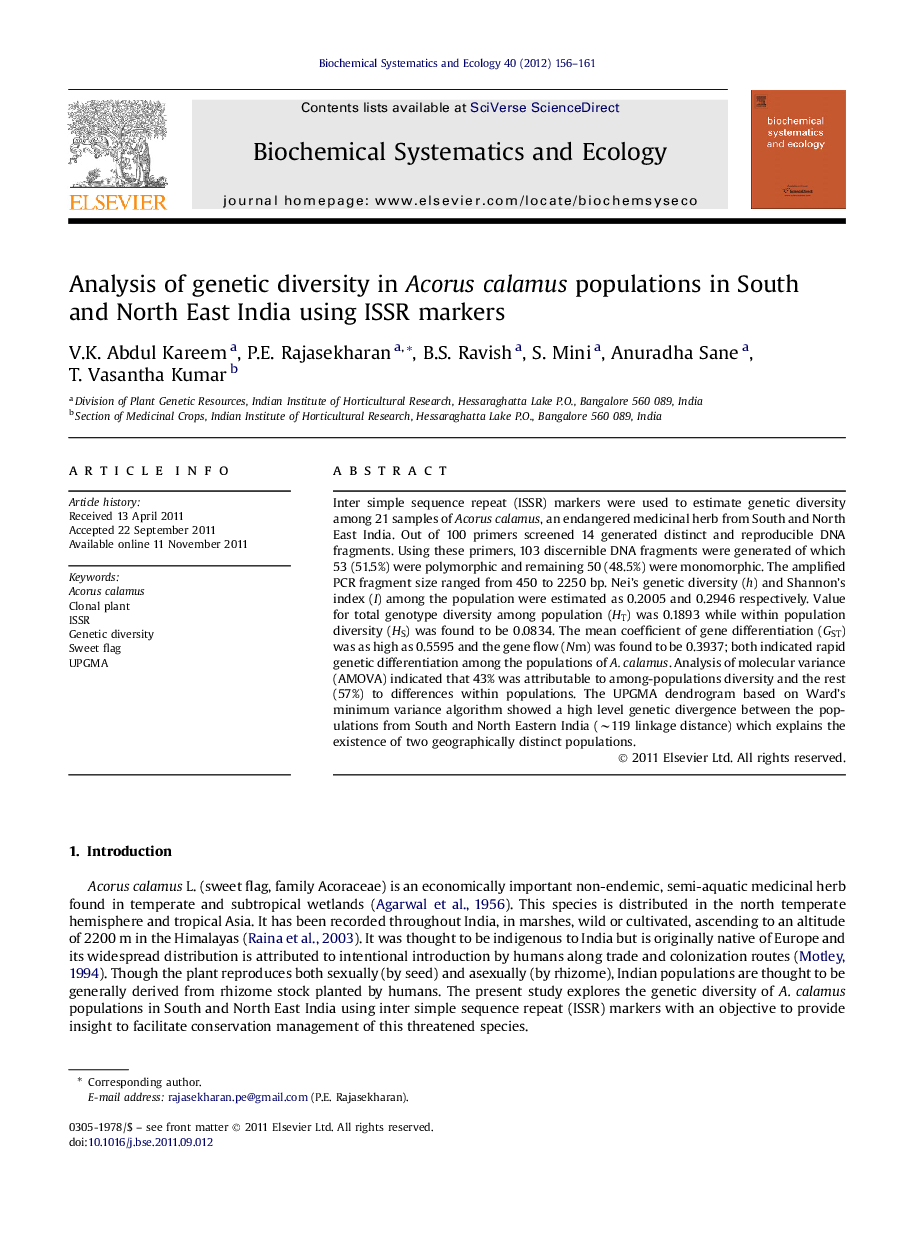| Article ID | Journal | Published Year | Pages | File Type |
|---|---|---|---|---|
| 1351860 | Biochemical Systematics and Ecology | 2012 | 6 Pages |
Inter simple sequence repeat (ISSR) markers were used to estimate genetic diversity among 21 samples of Acorus calamus, an endangered medicinal herb from South and North East India. Out of 100 primers screened 14 generated distinct and reproducible DNA fragments. Using these primers, 103 discernible DNA fragments were generated of which 53 (51.5%) were polymorphic and remaining 50 (48.5%) were monomorphic. The amplified PCR fragment size ranged from 450 to 2250 bp. Nei’s genetic diversity (h) and Shannon’s index (I) among the population were estimated as 0.2005 and 0.2946 respectively. Value for total genotype diversity among population (HT) was 0.1893 while within population diversity (HS) was found to be 0.0834. The mean coefficient of gene differentiation (GST) was as high as 0.5595 and the gene flow (Nm) was found to be 0.3937; both indicated rapid genetic differentiation among the populations of A. calamus. Analysis of molecular variance (AMOVA) indicated that 43% was attributable to among-populations diversity and the rest (57%) to differences within populations. The UPGMA dendrogram based on Ward’s minimum variance algorithm showed a high level genetic divergence between the populations from South and North Eastern India (∼119 linkage distance) which explains the existence of two geographically distinct populations.
► Genetic diversity analysis of A. calamus populations in South and North East India produced a total of 103 clear and reproducible bands. ► 53 (51.5%) were polymorphic and remaining 50 (48.5%) were monomorphic. ► AMOVA revealed highly significant genetic differences in four populations. ► Low level of genetic variation within South and North East Indian populations. ► High genetic differentiation between the regions in A. calamus attributed to the clonal nature of this species.
